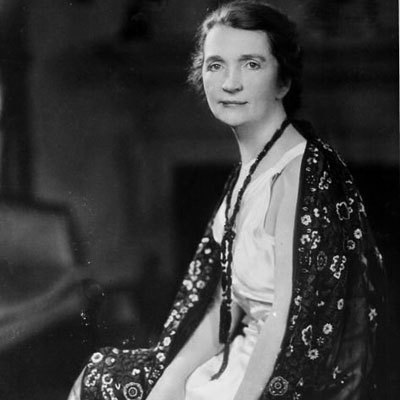The advent of "rubbers"
Good-bye, linen; hello, rubber! In 1844, Charles Goodyear patented the process of vulcanizing rubber—making it waterproof, stronger, and more elastic—and condoms became mass-produced. To the dismay of Christian groups, advertisements for Dr. Power's French Preventatives appeared in the New York Times.The Comstock Law of 1873 outlawed sending "any article or thing designed or intended for the prevention of conception" through the mail, making these mass-produced "rubbers" increasingly difficult to find. As a result, the unsanitary practice of "recycling" condoms continued.
Give me birth control or give me death
During World War I, the U.S. government approved the distribution of condoms to the troops stationed abroad in order to combat sexually transmitted diseases.Meanwhile, Margaret Sanger (pictured) was crusading for reproductive rights for women. "She established the need for women to control their fertility as a mainstream issue and a right," says Paul D. Blumenthal, MD, a professor of obstetrics and gynecology at Stanford University School of Medicine.
Defying the government, she distributed birth control information to the public. Her efforts played a role in the amendment of the Comstock Law in 1936 to exempt physicians from its ban.
Peace, love, and the Pill
Hormonal birth control was tested in the '40s and '50s, but it wasn't approved by the U.S. Food and Drug Administration (FDA) until 1960. Five years later, it became the leading method of reversible birth control.But holy hormones! The original Pill contained more than 100 mcg of estrogen (now the average dose is 20 to 35 mcg), causing serious side effects such as blood clots. "I don't think women realize that today's side effects —the bloating, weight gain, and headaches—are so minimal. They weren't as tolerable at first," says Julie Oyler, MD, an assistant professor at the University of Chicago Medical Center.
In 1969, Barbara Seaman released The Doctors' Case Against the Pill, which resulted in a mandatory insert in the birth control packaging describing potential side effects.
Contraception and pop culture
The '70s brought the legalization of tubal ligation and the first scientific study of emergency contraception (though the FDA wouldn't approve it until the '90s). The '80s brought the short-lived Today sponge, which reappeared in pharmacies early this year; its withdrawal from the market prompted a hilarious 1995 Seinfeld episode in which Elaine attempted to deem her boyfriends 'sponge worthy'.Once taboo, birth control had hit the mainstream. The '90s brought the first mass-produced female condom, and 2001 brought the patch and the ring. "Trojan Man" radio advertisements hit airwaves and the first condom ad went live on primetime in 2005—although this popular Trojan ad (pictured) was rejected by some networks.
Withdrawal gets the OK
We might want to pass on most of the contraception methods of the past, but some age-old strategies just won't go away. Although it's often touted by doctors as ineffective, withdrawal got a tentative thumbs-up in a 2009 report published in the journal Contraception.Lovesick teenagers probably aren't wise to rely solely on this method, but the report did state that withdrawing on time, every time has only a 4% pregnancy rate. By comparison, condoms, when used every time, have a 2% pregnancy rate, according to the report.
"I think there's a lot of variation in effectiveness" says Jennifer Wu, MD, a gynecologist at Lenox Hill Hospital in New York City. "Someone in a long-term committed relationship will have very different results than 17-year-olds."
What's the future?
Contraception has made leaps and bounds, but there's still room for improvement and more options. "We live in a big market," says Dr. Blumenthal. "A product with tolerable side effects and high effectiveness could weigh in big." Here's what's coming up.• The 'career pill' Women could put their ovaries on hold, delay menopause, and make fertility last longer.
• Adjudin: This hormonal male birth control will prevent sperm from maturing. Too bad it will be years before it's available.
• Reversible Inhibition of Sperm Under Guidance (RISUG): A reversible vasectomy? It's currently in Phase III clinical trials in India.
• Dry orgasm pill:This pill prevents the muscle movements triggering sperm and bodily fluids, but it's not even close to clinical trials.
http://www.health.com
 4:49 PM
4:49 PM
 About the World
About the World








0 comments:
Post a Comment